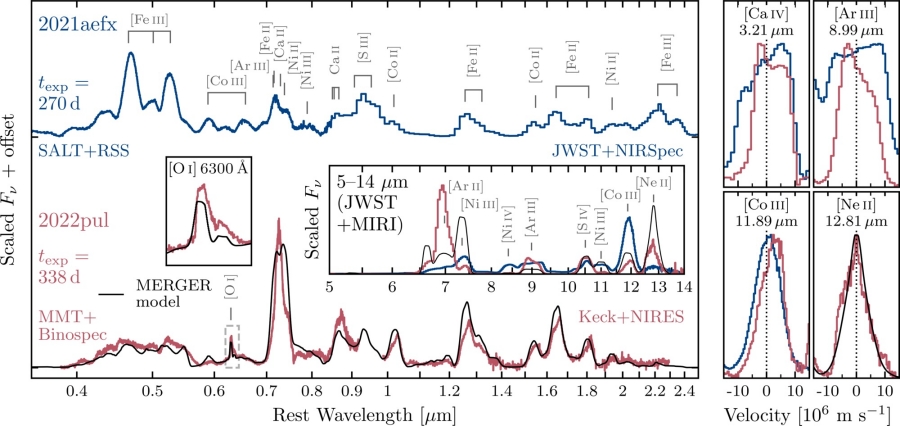Thesis Topic: Constraining the explosion mechanisms of Type Ia supernovae using optical-infrared observations and radiative-transfer simulations

Thesis Supervisor: Ferdinando Patat
Abstract
Type Ia supernovae (SNe Ia) play a major role in observational cosmology, having enabled the discovery that the expansion of the universe is accelerating and revealed a tension between different measurements of the Hubble constant. SNe Ia are also the main producers of iron (~2/3 of the total iron content in our galaxy today) and are hence key players in the chemical enrichment of galaxies. However, despite their secured association with the thermonuclear explosion of a carbon-oxygen white dwarf (WD) star in a binary system, many basic questions remain as to the nature of the companion (a normal star or another WD), the mass of the exploding WD (near the Chandrasekhar-mass limit of MCh ~ 1.4 Msun, or sub-MCh, or even super-MCh), and the precise explosion mechanism. Distinguishing between these various models has been a challenge, and different groups disagree on the predicted observable signatures. Moreover, it is suspected that multiple channels contribute to the SN Ia population, whose relative fractions could change according to the local environment or look-back time, introducing systematic uncertainties in their use as distance indicators or in chemical evolution models. A better understanding of SNe Ia thus constitutes an astrophysical emergency!
The proposed PhD thesis combines observational data with numerical radiative-transfer simulations. The student will analyse late-time (nebular) infrared spectra of a sample of SNe Ia obtained with JWST, combined with ground-based optical data, to determine key diagnostics that could help differentiate between different progenitor channels and explosion mechanisms. There will be numerous opportunities for collaborations with the local supernova community on the Garching campus, as well as other colleagues based in Europe (France, UK) and in the US. The amount of time and effort devoted to observational, numerical modelling, and theoretical skills will be adjusted according to the student's profile and interests.

Figure caption:
Left panel: Nebular spectra of SN 2021aefx at 270 days post explosion (top) and of SN 2022pul at 338 days post explosion (bottom). The SN 2022pul spectrum is compared to a violent merger model, which correctly predicts a narrow [O I] 6300 Angstrom doublet (solid line; see also left inset).
Right panels: Comparison of mid-IR line profiles in both spectra, normalised to their peak intensity. Lines in this range are more isolated and reveal variations in morphology (boxy vs. peaked), as well as kinematic offsets of several 1000 km/s. The mid-IR spectrum of SN 2022pul shows a prominent line due to [Ne II] 12.8 micron, which is characteristic of the violent merger of two WDs.
